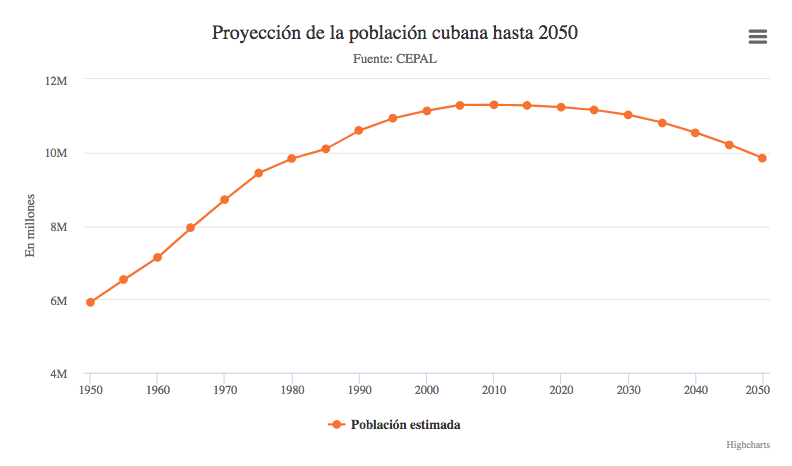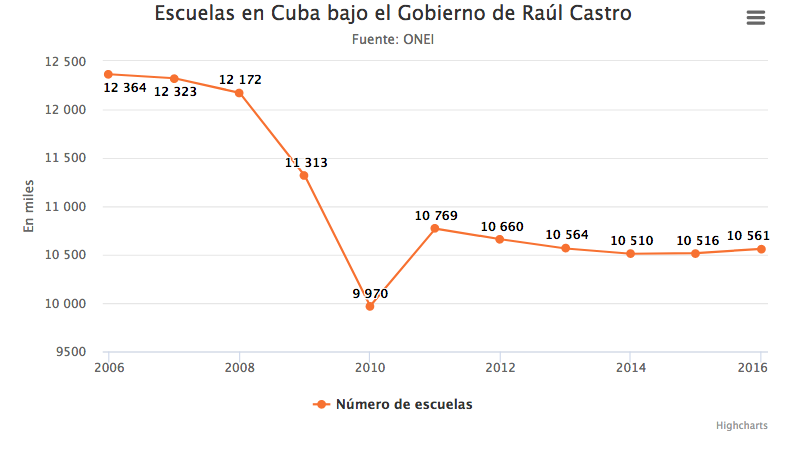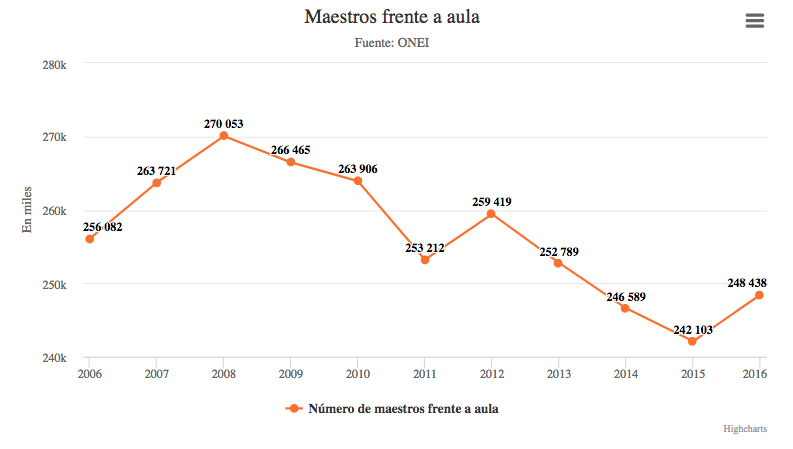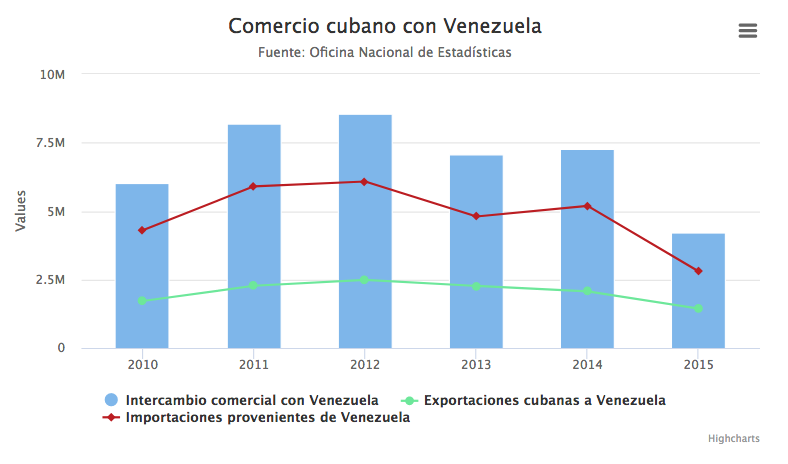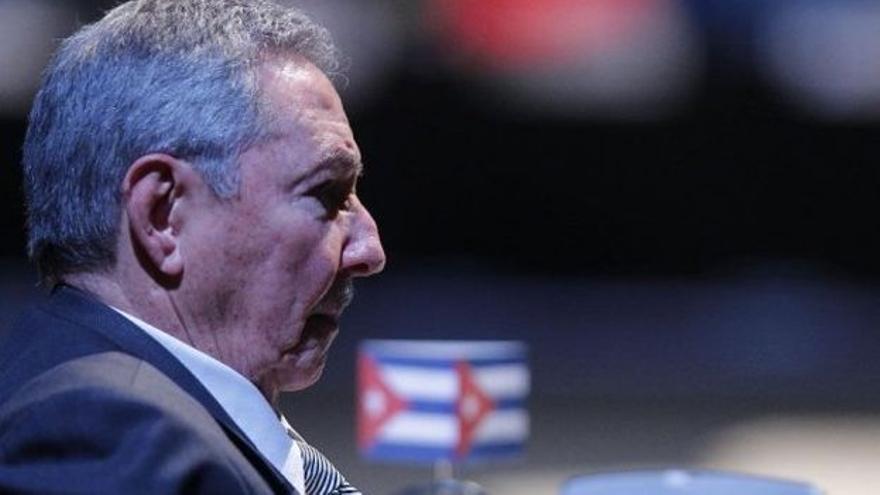
![]() 14ymedio, Mario J. Pentón/Reporting Team, Miami, 17 April 2018 — On the last day of July 2006 Cuba’s prime time news program broke with its usual monotony. Carlos Valenciaga, Fidel Castro’s chief of staff, announced to Cuba and the world that the hitherto invincible Commander-in-Chief had temporarily ceded power, after suffering intestinal bleeding. Raúl Castro, his younger brother, took the reins of the Island.
14ymedio, Mario J. Pentón/Reporting Team, Miami, 17 April 2018 — On the last day of July 2006 Cuba’s prime time news program broke with its usual monotony. Carlos Valenciaga, Fidel Castro’s chief of staff, announced to Cuba and the world that the hitherto invincible Commander-in-Chief had temporarily ceded power, after suffering intestinal bleeding. Raúl Castro, his younger brother, took the reins of the Island.
Two years later, as a surprise to no one, the second Castro was elected by Parliament to the presidency of the Council of State and undertook a series of reforms to the socialist model to “make it sustainable.” Today 14ymedio presents an assessment of what happened in the “Raulista era,” a decade of very limited advances and of stagnation:
1. The battle against “absurd prohibitions”
On arriving in power, the general presented himself as pragmatic and promised to end the “absurd prohibitions.” In March 2008, he allowed Cubans to stay in hotels, restricted, until then, to international tourists. That same year the limitations were ended on Cubans contracting for cellphone service and buying computers and DVD players.
2. Leasing of idle lands to farmers
In 2008, the Government authorized the delivery of idle state lands to farmers and cooperatives under a form of limited term leases known as usufruct. More than 50% of the country’s arable land was not in productive use and, even today, Cuba spends more than one billion dollars a year on imported food for the “basic market basket.” A decade later the results have been mediocre due to the lack of equipment and necessary inputs, such as seeds and fertilizer, and excessive controls on the marketing of crops.
3. Expansion of the private sector
In 2010, Castro gave a boost to self-employment and expanded the list of occupations that could be practiced outside the state sector. However, large sectors of the economy, including the exercise of professions, remain reserved to the State. The flexibilizations promoted, in particular, renting rooms to tourists, food services and passenger transportation. At present, the number of private workers exceeds half a million, but the absence of a wholesale market, high taxes and the prohibition of importing products hampers the development of this type of work.
4. Cubans embark on the internet
Until 2009, only a small fraction of the population, in addition to tourists, had the privilege of surfing the internet on the island. In 2013, the Telecommunications Company of Cuba (ETECSA) installed the first wifi browsing areas, with prohibitive prices and with dozens of censored sites. Today there are 635 of these wireless areas on the island and the cost of one hour of access is 1 CUC (the equivalent of about a day’s wages). A year ago the state monopoly took web browsing to some homes, but Cubans still wait for internet access from cellphones and the unblocking of censored sites, which include this newspaper.
5. So long to the “gratuities”
Raúl Castro undertook a campaign against “gratuities,” or perks, which he blamed on the legacy of Soviet paternalism. Under his mandate he reformed the Social Security Law and raised the age of retirement by five years, to 60 years for women and 65 years for men. In addition, he cut the number of pensioners and eliminated a good part of the additional perks, such as beach house vacations and the routinely handed out bags of food and toiletries that thousands of state employees received.
The First chart below compares the proportion of the population that is age 60 and older projected out to 2050 among a group of Latin American countries; only Barbados is projected to have a population older than Cuba’s. The second chart reports past data and future projections for the total population of Cuba between 1950 and 2050.
6. Cuts in health and education
The number of hospitals has fallen by 32% in the last decade and the medical staff in family clinics barely fill 40% of the positions. These cuts are more alarming given that 20% of the population exceeds 60 years of age and the population is one of the oldest in the Americas.
The chart below shows the total number of schools in Cuba under Raul Castro’s government, between 2009 and 2016.
Raúl Castro eliminated the program of boarding schools in the countryside for high school students, one of the “jewels of the crown” under Fidelismo. During his term he has had to deal with the deficit of teachers that at the beginning of the school year 2017-2018 amounted to 16,000 vacancies. Enrollment decreased by 32% in high schools and even more in university education, which registered a fall of 78%. Many young people do not want to continue studying for careers that offer them miserable salaries. Furthermore, certain professions, such as the medical field, have come with restrictions on the ability to freely leave the country.
The first chart below shows the number of schools in Cuba and the second the number of classroom teachers in Cuba between 2006 and 2016, based on statistics collected by the Cuban government.
7. The ration book survives
Since 1961 Cubans have a ration card that gives each citizen a minimum quota of products subsidized by the State. Every year the Government allocates some two billion dollars to a bureaucratic structure that distributes products ranging from a piece of daily bread to rice, beans, sugar, salt and coffee.
One of the most emblematic promises of Raulism was to eliminate the ration book, but it never came to fruition. Although the rationed distribution system has fewer and fewer products, a good part of the population depends on this support to survive due to low wages, with salaries averaging about $29 per month. Today, the real purchasing power of Cubans is just 51.1% of what it was at the end of the 1980s, before the end of the so-called Special Period in a Time of Peace — the devastating aftermath of the collapse of the Soviet Union and the loss of its economic support for Cuba.
8. The lifting of the prohibition on the sale of houses and cars
For decades in Cuba, the sale of houses was forbidden, private construction was limited and the ability to rent out one’s dwelling was suppressed. In 2011 Raúl Castro surprised the nation with one of his most important social measures: opening the real estate market, an important step in a country with 3,824,000 houses, of which 39% are in a regular or bad state, according to the 2012 census.
Three years later, the authorization to sell vehicles to private individuals was achieved, a privilege reserved up until then to government leaders and Party members. Although the second-hand private vehicle market has behaved with great dynamism, sales by state dealerships has not been successful due to the high prices. A Cuban living only from their official salary needs to work 189 years to buy a 2006 Audi from an official dealership, which would be priced at 70,000 dollars.
9. The end of the exit permit
In January 2013, Castro eliminated the so-called “white card,” the permit required to leave the country, and allowed nationals to travel freely. Since then more than 779,000 Cubans have gone on a trip, 79% of them for the first time, according to official figures. The elimination of obstacles to leaving the Island led to a new migration crisis and in seven years, until the end of the wet foot/dry foot policy in 2017, the United States welcomed more than 235,000 Cubans.
The authorities, nevertheless, continue to refuse to allow Cubans residing abroad who have been publicly critical of the government to visit the island. In addition, hundreds of activists and leaders of the opposition have been blocked from abroad; the government advises them that they are “regulated,” as a reason to deny them the right to leave.
The chart below shows Cuban emigration to the United States between 2010 and 2016. The orange line is the figure of Cubans admitted to the United States according to the US Department of Homeland Security, and the grey line is the number of Cuban emigrants according to the Cuban government.
10. Institutionality
Raúl Castro’s two terms as president have been characterized by a greater institutionality. After almost half a century of Fidelista voluntarism — the idea that willpower alone can overcome social and economic challenges — the youngest of the brothers tried to strengthen the Council of Ministers, which now meets more frequently.
After a gap, under Fidel Castro, of 14 years without a Congress of the Communist Party, the only legal party in Cuba, under Raul the 6th and 7th Congresses were held. In these meetings the so-called Guidelines were approved, a road map to dismantle the structure of the Soviet system and open the economy to foreign capital, tourism and the replacement of imported products for those of national origin.
11. Restoration of relations with the United States
After more than five decades of enmity, the Cuban and American governments astonished the world on 17 December 2014 by announcing the restoration of diplomatic relations. The US president, Barack Obama, returned three spies imprisoned in his country to Havana and Castro did the same with two American prisoners. The Catholic Church, at the initiative of Pope Francis, played a central role in the secret conversations between the nations that led to the thaw.
Obama relaxed the embargo against the island, which allowed a notable increase in the number of Americans and Cuban Americans visiting Cuba. Flights between both countries and direct postal service were also resumed. Remittances from Cubans abroad to families on the island, one of the fundamental pillars of the Cuban economy, have grown to 3.444 billion dollars in 2017.
12. Renegotiation and forgiveness of external debt
Between 2013 and 2016, Cuba renegotiated its old external debt, which had been unpaid since Fidel Castro urged developing countries to put aside their credit obligations in the 1980s. Raúl Castro managed to cancel 90% of the debt that Cuba had taken on during time of the Soviet Union and still owed to Russia.
After one negotiation, the debt of 8.5 billion dollars owed to the Paris Club was reduced to 2.6 billion payable in 18 years. Mexico forgave 70% of the 487 million dollars it had lent to the Island and in 2014 Japan forgave almost one billion dollars of an old debt. Vietnam and China also part of the debt owed to them, but some amounts have not been set aside.
13. Monetary unification, a pending issue
With the opening to tourism and the Soviet collapse Cuba created a new, second, currency that within the Island has parity with the dollar: the convertible peso (CUC), which coexists with the Cuban peso (CUP). One CUC is worth 25 CUP. Since his arrival to power, Raul Castro has tried to unify the currencies because of the economic distortions that they cause, especially in the state business sector, which benefits from an unrealistic exchange rate.
The government announced that the currency that will survive is the Cuban peso (CUP), but until now the exact date for monetary unification is not known nor what the exchange rate will be relative to the dollar once there is only one currency.
14. The country does not attract enough foreign investment or grow at an adequate pace
Cuba needs an injection of capital of at least 2.5 billion dollars every year, and growth at a sustained rate of more than 4% of GDP, according to some economists. Ten years after assuming the presidency, Raúl Castro leaves the country without achieving these minimums. The mega-project at the Port of Mariel, in which Brazil invested more than 600 million dollars, has been slow to develop. The country has also developed various catalogs of opportunities to encourage foreign investment but without much success.
Under Raúl Castro’s presidency, Cuba grew 2.4% as an annual average, according to official figures. The average monthly salary has also been raised from 414 (16.5 dollars) to 740 pesos (29.6 dollars), although the purchasing power of Cubans is still lower than it was in 1989. The Government announced a growth of 1.5% of GDP in 2018, but most scholars of the Cuban economy without links to the government do not believe that figure.
15. Raúl Castro before the death of his brother and the Venezuelan setback
On the night of 25 November 2016, on a national television broadcast, Raúl Castro announced the death of his brother, who had ruled Cuba’s destiny for almost 50 years. Although Fidel Castro had been away from power for a decade, he continued to actively comment on national and international politics in articles called ’Reflections’ that were published the few pages of the official newspapers.
The death of Fidel Castro coincided with the end of leftist movements and governments in the region that proliferated under the umbrella of the so-called Bolivarian Revolution of Hugo Chávez (1954-2003), often at the expense of Venezuela’s oil bill. The political turns in Brazil, Ecuador, Chile, Paraguay and Uruguay have left only Nicolás Maduro, Havana’s main ally, and the crisis that Venezuela is going through has destroyed commercial relations between both countries. Shipments of oil from Venezuela to Cuba, one of the island’s largest sources of aid, have fallen from 100,000 barrels a day to less than 40,000 according to Reuters, forcing the island to look for other fuel suppliers.
The chart below shows Cuban trade with Venezuela between 2010 and 2015. The blue bars are commercial trade with Venezuela. The green line is Cuban exports to Venezuela. The red line is Cuban imports from Venezuela.
16. Critical changes, pending
At the beginning of 2015, Raúl Castro promised a new Electoral Law (the current one dates from 1992), but this reform did not materialize during his term. Something similar happened with the constitutional reform that has been expected for more than five years. The new constitution being prepared will maintain the role of the Communist Party of Cuba (PCC) as “leader in Cuban society” and socialism will continue to be “irrevocable,” according to a recent plenary session of the party.
17. Repression against dissidents and opposition leaders continues
Arbitrary arrests, confiscation of the means of work, and permanent destruction of the reputation of activists and opponents continued in the Raulist era. Since 2010, the Cuban Commission for Human Rights and National Reconciliation has recorded at least 52,829 people temporarily detained or prosecuted for political reasons. The number of political prisoners in the country exceeds one hundred.
State Security has also used technologies as a repressive weapon to monitor the whereabouts of dissidents, block their mobile phone lines or create digital sites to defame independent projects.
18. No progress in civil rights
Since the enactment of the 1976 Socialist Constitution until today, most of the civil rights of Cubans remain violated. Freedom of expression, press, assembly, demonstration and association are all subordinated to “the aims of the Socialist State,” which in practice limits them. In Cuba, political parties are forbidden and candidates for the Assemblies of Peoples Power are not allowed to campaign or to propose their programs for the country.
Thanks to new technologies, independent digital spaces have emerged from the Island, such as Periodismo de Barrio, El Toque, El Estornudo and 14ymedio, but the government does not recognize press freedom and repressive forces often arrest and threaten journalists. Many websites critical of the system remain blocked on national servers.
_______________________
The 14ymedio team is committed to serious journalism that reflects the reality of deep Cuba. Thank you for joining us on this long road. We invite you to continue supporting us, but this time by becoming a member of 14ymedio. Together we can continue to transform journalism in Cuba.

